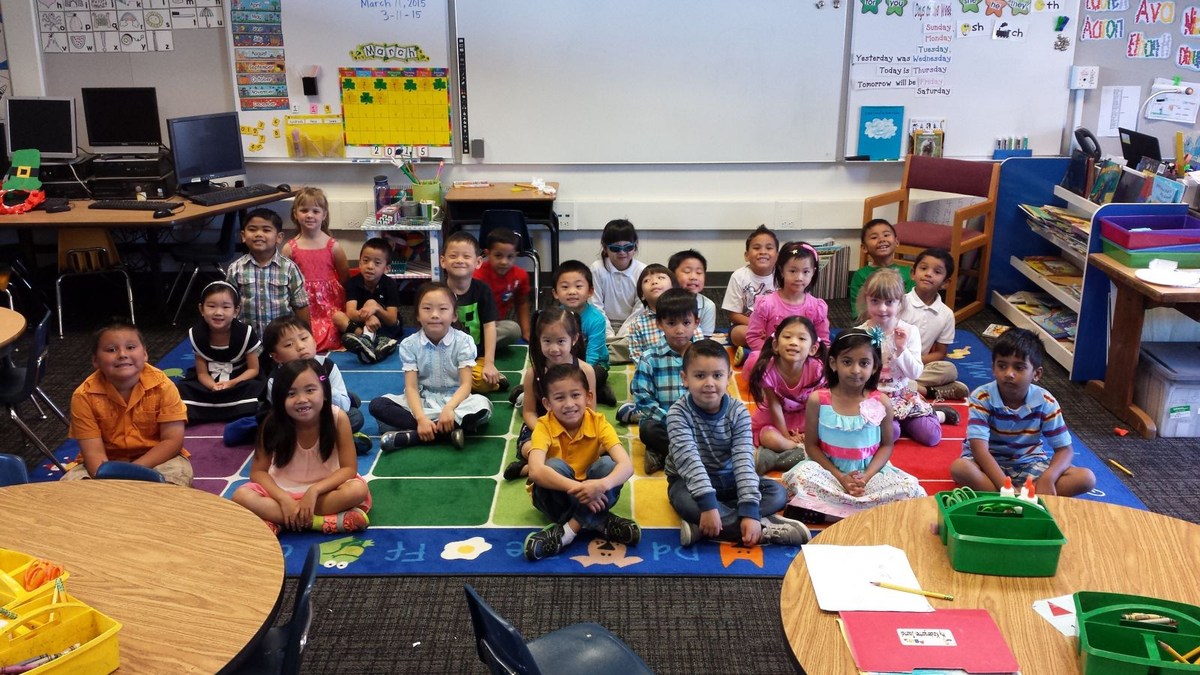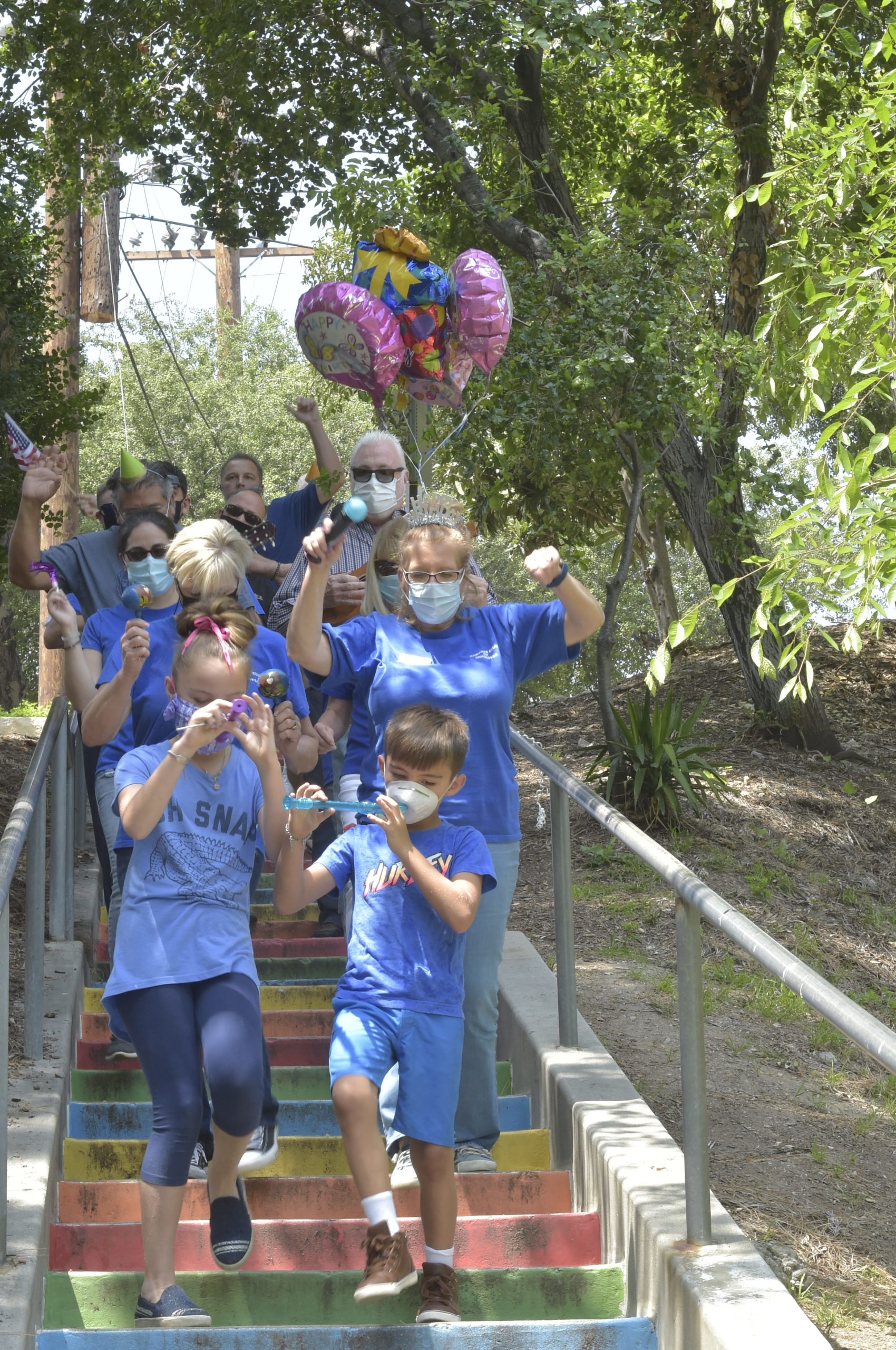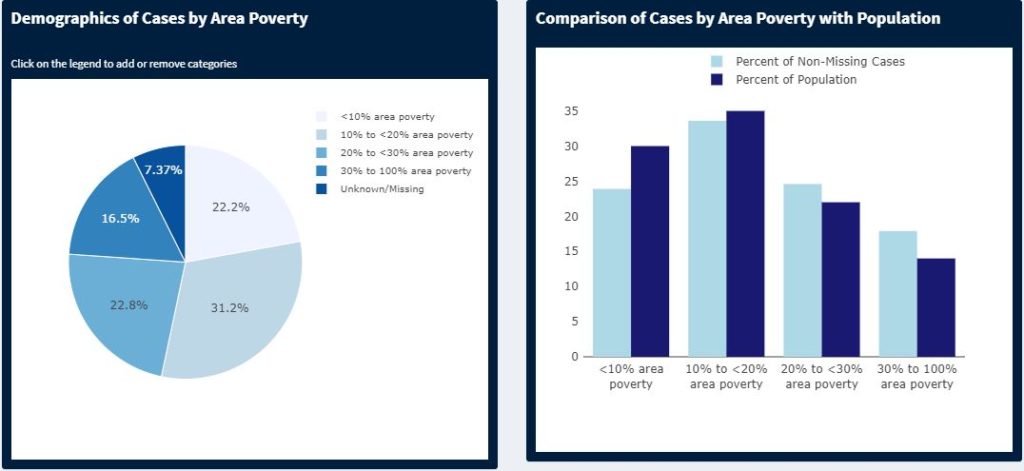
L.A. County’s communities of color remain the hardest hit by the COVID-19 pandemic as they are at a higher risk for exposure to the virus because many cannot work from home, cannot afford to miss a day of work, and often have jobs that require interacting with large numbers of people. Communities of color are on the frontlines of this pandemic: they work in health care, agriculture, transportation, restaurants, grocery stores, delivery services, and many other fields.
As of Thursday afternoon, the Department of Public Health had identified 23,182 positive cases of COVID-19 across all areas of L.A. County, and a total of 1,111 deaths.
Race and ethnicity are so far available for 99% those who died:
- 38% of deaths occurred among Latinx residents.
- 28% among White residents.
- 19% among Asian residents.
- 13% among African American residents.
- 1% among Native Hawaiian/Pacific Islander residents.
- 1% among residents identifying with other races.
On April 14 the L.A. County Board of Supervisors directed Public Health to compile a report summarizing information about the racial/ethnic and socioeconomic characteristics of those who have been tested for COVID-19; those who have been diagnosed with infection; and those who have required hospitalization.
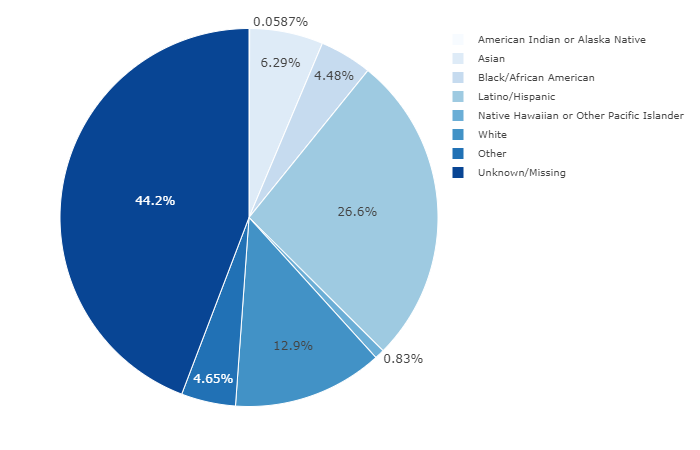
Through April 26, there were a total of 19,516 confirmed COVID-19 cases in L.A. County, excluding Long Beach and Pasadena which have their own health departments, and data on race and ethnicity was available for 10,699 (54.8%) of these cases. Of these, 46.4% were Latino, 23.7% were white, 11.5% were Asian, 8% were African American,1.5% were Native Hawaiian or other Pacific Islander, 0.1% were American Indian or Alaska Native, and 8.6% identified as another race/ethnicity. Public Health found that Native Hawaiians or other Pacific Islanders had the highest population rate of COVID-19 cases (840 per 100,000), followed by Latinos (114 per 100,000), African Americans (102 per 100,000), whites (78 per 100,000), Asians (73 per 100,000) and American Indian or Alaska Natives (50 per 100,000). These differences in rates assume that missing data on the race/ethnicity of confirmed cases is randomly distributed across all confirmed cases, regardless of their race/ethnicity.
Public Health analyzed data on deaths by race and ethnicity for 865 confirmed COVID-19 deaths in the County. Of these, 37.1% were Latino, 28.2% were white, 18.4% were Asian, 13.8% were African American, 1.3% were Native Hawaiian or other Pacific Islanders, 0.1% were American Indian or Alaska Natives, and 1.2% identified as another race/ethnicity. Native Hawaiians or other Pacific Islanders had the highest population rate of COVID-19 deaths (71 per 100,000), followed by African Americans (13 per 100,000), Latinos (10 per 100,000), Asians (8 per 100,000), whites (6 per 100,000) and American Indian or Alaska Natives (3 per 100,000).
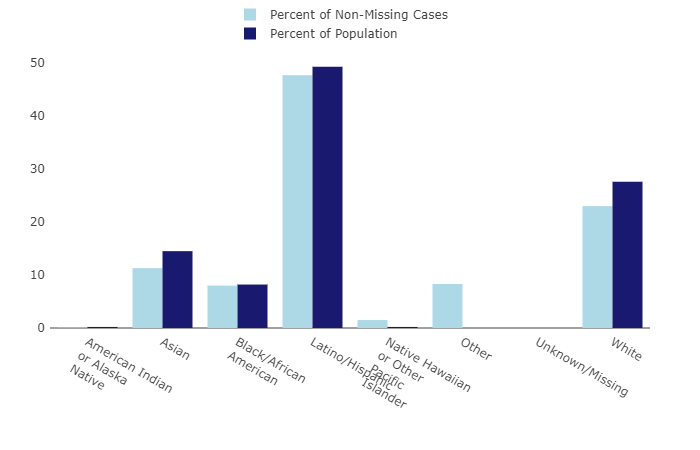
Taking each group’s population into account, the death rate among African Americans is 13.2 per 100,000, which is significantly higher than the mortality rate of other races and ethnicities. For people who identify as Latinx, the death rate is 9.8; for people who are Asian, the rate of death is 7.9; and for whites, the death rate is 5.7.
Looking at this data by community poverty levels, those living in the highest poverty areas had the highest death rate (16.9 per 100,000), followed by those in the second highest poverty areas (11.9 per 100,000), the third highest poverty areas (7.9 per 100,000) and the lowest poverty areas (5.5 per 100,000). People who live in areas with high rates of poverty have three times the rate of deaths for COVID-19.
Public Health reports that that as relative income decreases, rates of confirmed cases and deaths increase. “However, the data on COVID-19 testing indicate a social gradient in the opposite direction. As relative income increases, the rate of testing increases,” wrote officials.
These trends suggest that more affluent residents have better access to COVID19 testing and treatment services, even as the rates of infection appear to be higher in lower income communities.
“Many of our hardest working families are either uninsured or underinsured and do not normally seek access to health care, which is why increasing access to COVID-19 testing sites remains one of my top priorities,” said Los Angeles County Supervisor Hilda L. Solis. “We know that widespread testing will help flatten the curve. In addition, preliminary demographic data has revealed that L.A. County’s communities of color have been disproportionately impacted by COVID-19. I have worked diligently to remove barriers to testing and to expand access in diverse socioeconomic communities. I’m pleased all essential workers regardless of symptoms can be tested. That includes our first responders, healthcare professionals, grocery workers, and critical government workers. Asymptomatic individuals who are either over 65 or have chronic underlying health conditions can also be tested. For all L.A. County residents being tested for COVID-19, immigration status and health insurance are never requested or taken into account.”
Public Health has laid out a plan to address these health equity concerns by ensuring access to testing, integrating testing with care coordination, and ensuring access to potential treatment at care sites for highly impacted communities. Part of the plan includes strengthening a tailored communication strategy to increase language access and conduct more robust outreach, education and engagement.
There are now 35 drive-up testing sites throughout L.A. County. They are free and do not require proof of medical insurance. If you have symptoms such as difficulty breathing or a high fever, or are a first responder, make an appointment at the website covid19.lacounty.gov/testing or dial 2-1-1 to find a neighborhood testing site near you. You must have an appointment for a test, but there are many time slots available—including same-day, or next-day appointments.
There are also resources for people who are experiencing symptoms of COVID-19, but do not have health insurance. If you are having difficulty breathing or have a high fever, you can dial 2-1-1 to find a neighborhood clinic near you. You may also qualify for My Health LA, a free health care program with a network of more than 200 community clinics for low-income L.A. County residents who are 26 years or older. Undocumented immigrants qualify for My Health LA. Call (844) 744-6452 for information on how to enroll.



